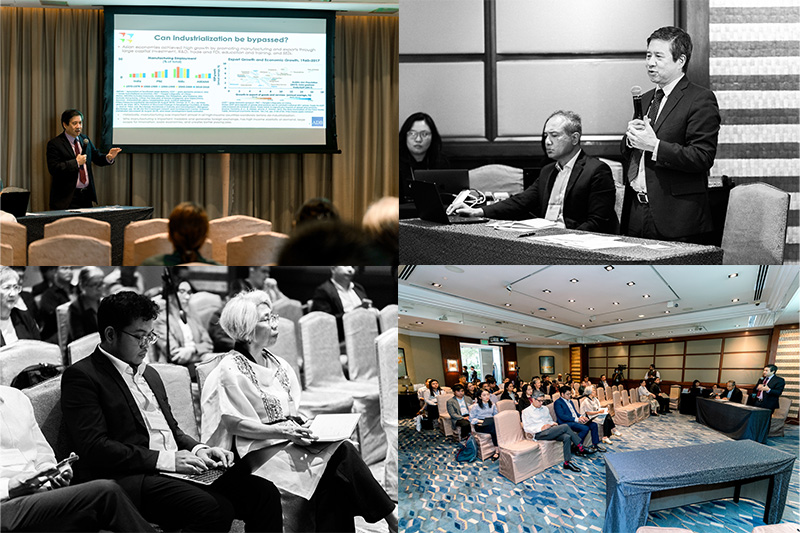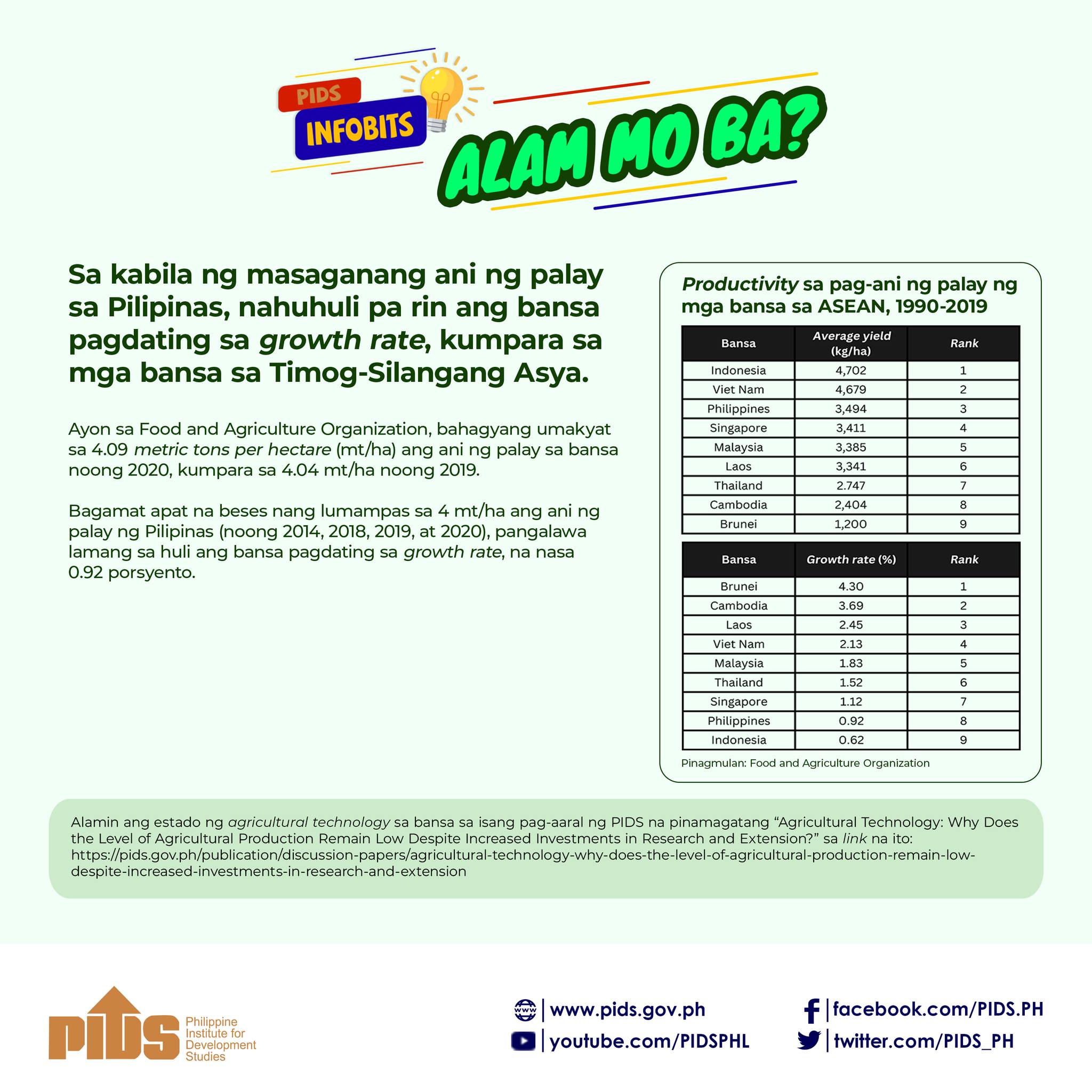Intensified trade with Asean and the rest of the global economy would put the Philippines at a disadvantage given the lack of infrastructure and slow government spending on public goods and services, the head of Philippine Institute of Development Studies (PIDS) said yesterday.
But the country’s chief economist remained bullish on trade as the value of imported goods grew for the sixth-straight month last November at a rate fastest in Asia, which Economic Planning Secretary Arsenio M. Balisacan said reflected investor confidence in the country.
Economists of debt watcher Standard & Poor’s, meanwhile, told a webcast that the biggest risks to the country’s investment-grade credit rating remained the low capita to gross domestic product ratio as well as barriers to institutionalize the good governance framework.
If under a new administration by midyear “the governance agenda stalls or [the new President] reverses gains in the Philippines’ external position will there be downward pressures in ratings,” according to S&P.
For PIDS president Gilbert M. Llanto, the bigger issue with regards the economy this year was if it “can sustain [the] record growth performance amid very challenging times,” citing that “certain headwinds could make for rough sailing” mainly in terms of trade.
“As the Philippine economy integrates more closely with the global and regional economy, external events will have a bigger impact on domestic growth prospects. Weak external demand will have negative impacts on the growth of trade and services. China’s slowing growth and recession in Japan do not bode well for the economy. Weaknesses among Asean’s major trading partners will also have negative spillover effects on Asean member-states like the Philippines,” Llanto explained.
“Because of this, there is a great risk that trade-led growth may not be a viable option for the Philippines in the immediate future. The Philippines still suffers critical development constraints: Infrastructure is inadequate and there are problems with connectivity. It does not help that government spending has been somewhat constricted by procurement processes and bureaucratic inefficiency,” he said.
The government nonetheless remained bullish on external trade prospects as a preliminary report of the Philippine Statistics Authority showed that the imports bill jumped 10.1 percent to $6.1 billion in November last year from $5.5 billion a year ago. The increase posted last November sustained the year-on-year jumps being posted since June.
Exports, however, which economists had said was the main drag to economic growth during the fourth quarter of 2015, likely ended the year with a year-on-year drop, Balisacan said.
In a statement, the National Economic and Development Authority (Neda) attributed the imports growth that month to “higher purchases of capital goods, consumer goods and raw materials and intermediate goods.”
In November, the value of imported raw materials and intermediate products, which make up two-fifths of the total, increased by 14 percent year-on-year to $2.5 billion.
Capital goods imports, meanwhile, jumped 40.8 percent that month, Neda said.
The value of imported consumer goods rose 8 percent year-on-year to $1 billion “due to higher purchases of durable goods and home appliances.”
“Despite an expected slow recovery in the global economy, continued growth in the country’s merchandise imports signifies the increasing investment demand in the Philippines,” said Balisacan, who is also Neda’s director general. Capital goods as well raw materials and intermediate goods are being used in manufacturing.
At the end of the first 11 months of 2015, imports grew 4.5 percent to $62.6 billion from $59.9 billion in the previous year.//
But the country’s chief economist remained bullish on trade as the value of imported goods grew for the sixth-straight month last November at a rate fastest in Asia, which Economic Planning Secretary Arsenio M. Balisacan said reflected investor confidence in the country.
Economists of debt watcher Standard & Poor’s, meanwhile, told a webcast that the biggest risks to the country’s investment-grade credit rating remained the low capita to gross domestic product ratio as well as barriers to institutionalize the good governance framework.
If under a new administration by midyear “the governance agenda stalls or [the new President] reverses gains in the Philippines’ external position will there be downward pressures in ratings,” according to S&P.
For PIDS president Gilbert M. Llanto, the bigger issue with regards the economy this year was if it “can sustain [the] record growth performance amid very challenging times,” citing that “certain headwinds could make for rough sailing” mainly in terms of trade.
“As the Philippine economy integrates more closely with the global and regional economy, external events will have a bigger impact on domestic growth prospects. Weak external demand will have negative impacts on the growth of trade and services. China’s slowing growth and recession in Japan do not bode well for the economy. Weaknesses among Asean’s major trading partners will also have negative spillover effects on Asean member-states like the Philippines,” Llanto explained.
“Because of this, there is a great risk that trade-led growth may not be a viable option for the Philippines in the immediate future. The Philippines still suffers critical development constraints: Infrastructure is inadequate and there are problems with connectivity. It does not help that government spending has been somewhat constricted by procurement processes and bureaucratic inefficiency,” he said.
The government nonetheless remained bullish on external trade prospects as a preliminary report of the Philippine Statistics Authority showed that the imports bill jumped 10.1 percent to $6.1 billion in November last year from $5.5 billion a year ago. The increase posted last November sustained the year-on-year jumps being posted since June.
Exports, however, which economists had said was the main drag to economic growth during the fourth quarter of 2015, likely ended the year with a year-on-year drop, Balisacan said.
In a statement, the National Economic and Development Authority (Neda) attributed the imports growth that month to “higher purchases of capital goods, consumer goods and raw materials and intermediate goods.”
In November, the value of imported raw materials and intermediate products, which make up two-fifths of the total, increased by 14 percent year-on-year to $2.5 billion.
Capital goods imports, meanwhile, jumped 40.8 percent that month, Neda said.
The value of imported consumer goods rose 8 percent year-on-year to $1 billion “due to higher purchases of durable goods and home appliances.”
“Despite an expected slow recovery in the global economy, continued growth in the country’s merchandise imports signifies the increasing investment demand in the Philippines,” said Balisacan, who is also Neda’s director general. Capital goods as well raw materials and intermediate goods are being used in manufacturing.
At the end of the first 11 months of 2015, imports grew 4.5 percent to $62.6 billion from $59.9 billion in the previous year.//












